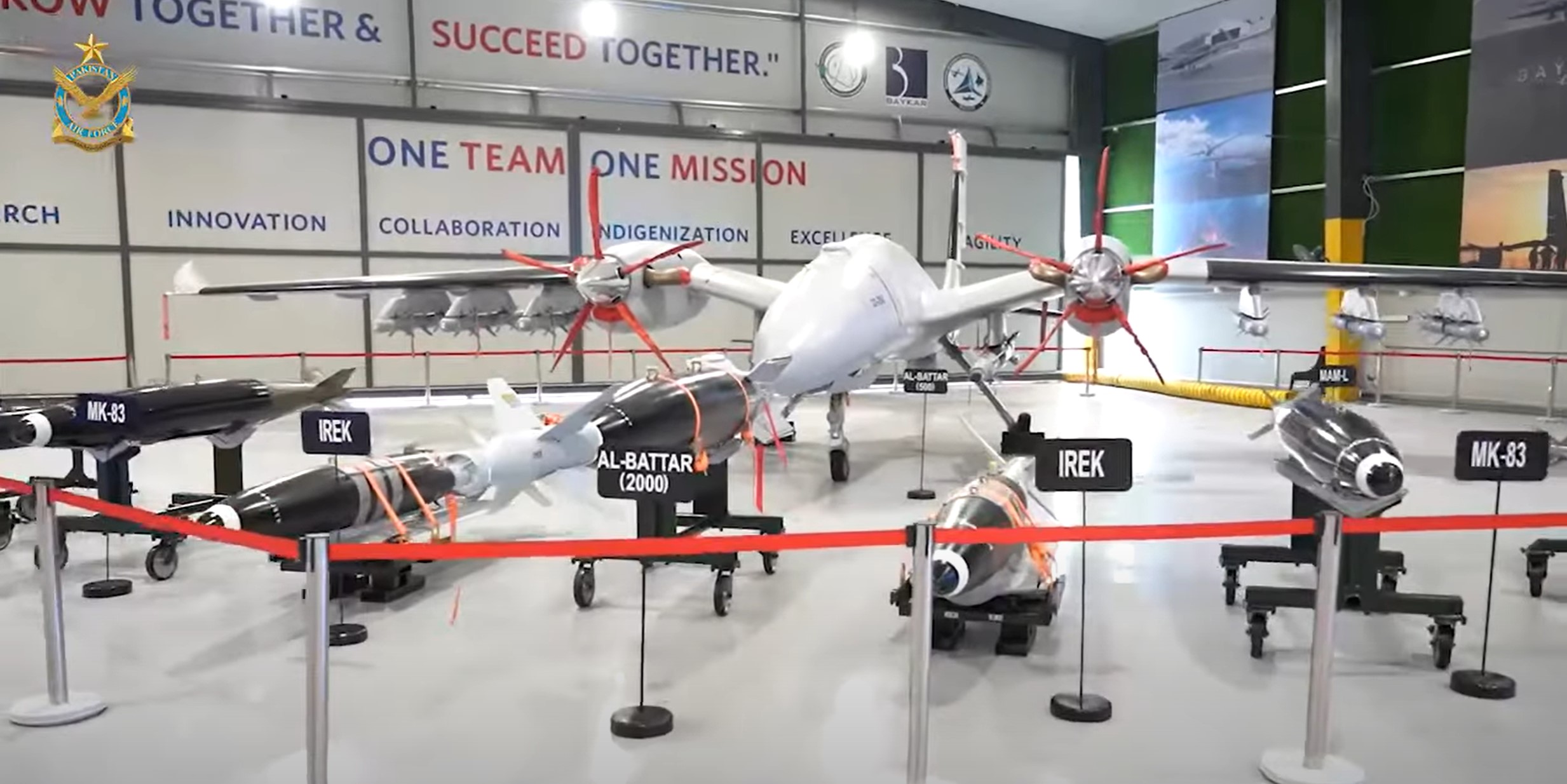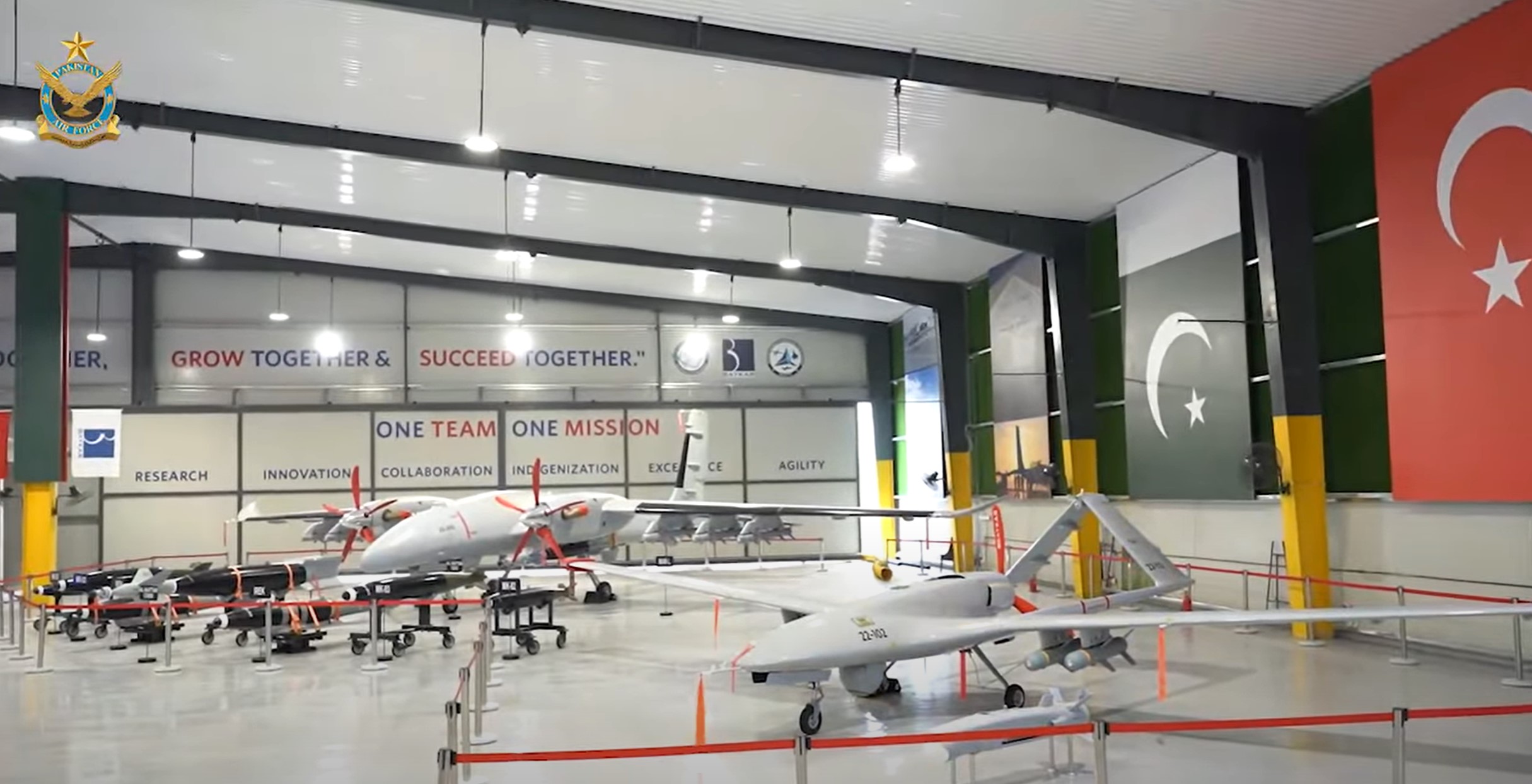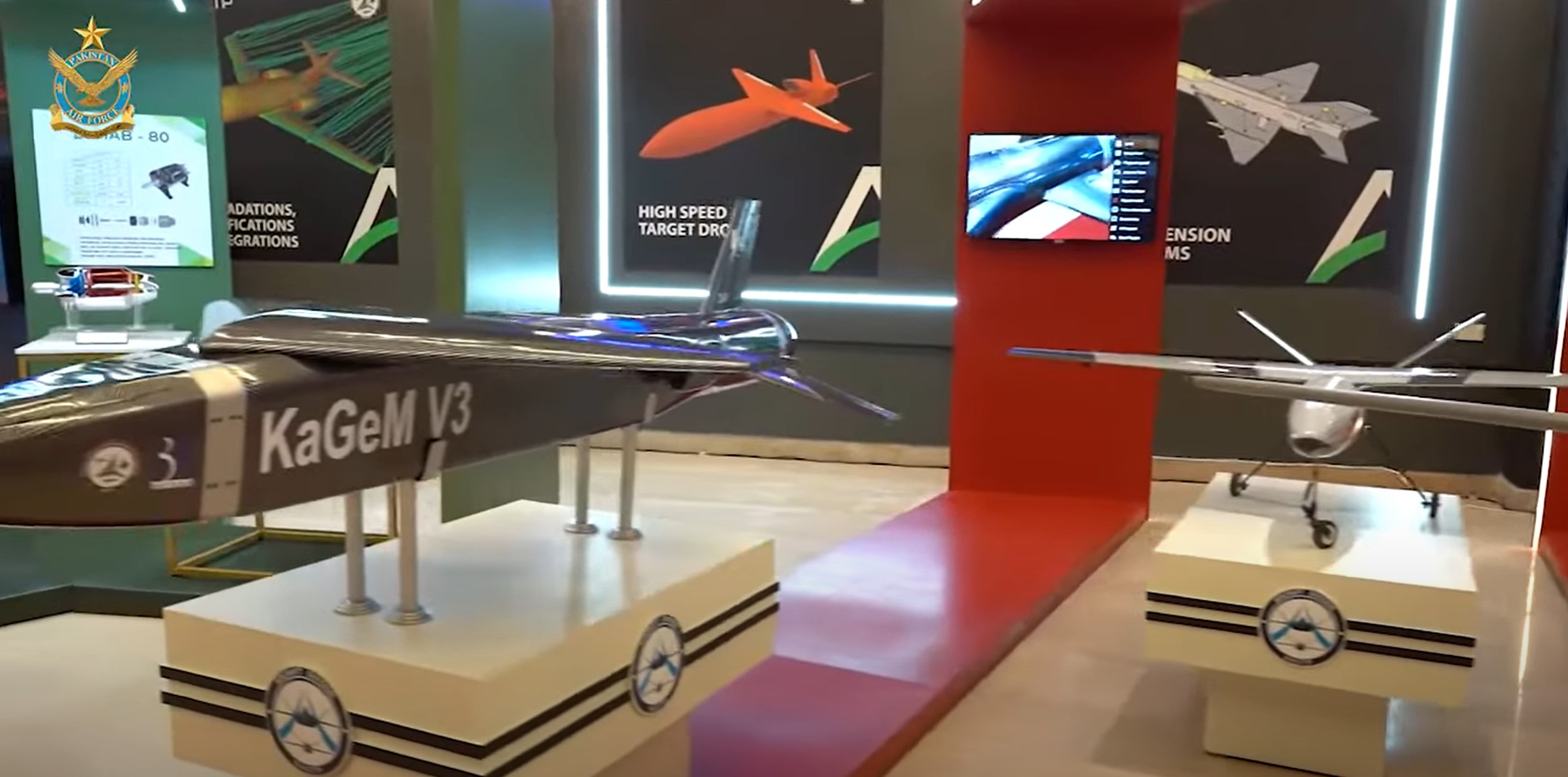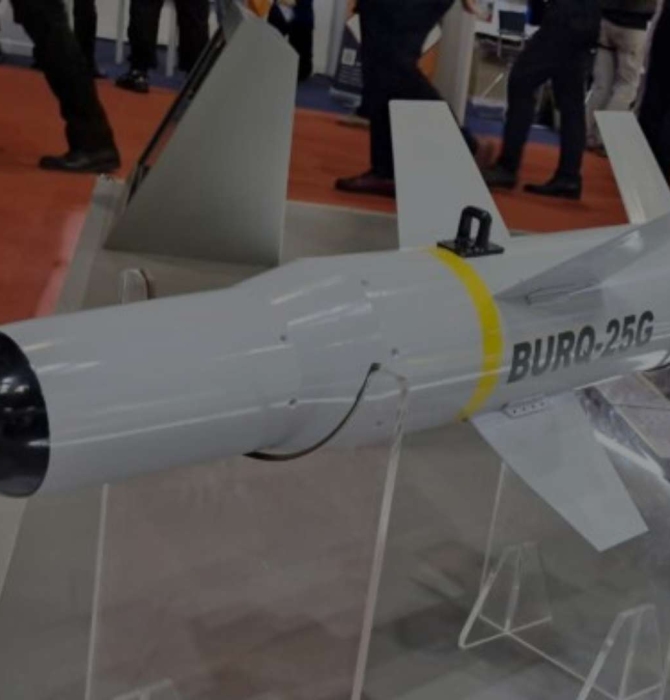3045Views

Pakistan Looks to Use Drones as Strike Assets
In a new promotional video covering the newly launched National Aerospace Science and Technology Park (NASTP), the Pakistan Air Force (PAF) revealed that it was integrating numerous stand-off range (SOW) air-to-surface munitions to its newly inducted Bayraktar Akıncı and Bayraktar TB2 drones.
The Bayraktar Akıncı is a high-altitude long-endurance (HALE) drone with a payload capacity of 1,500 kg, top speed of 150-195 knots (depending on engine type), and endurance of 24 hours. The Bayraktar TB2 is a medium-altitude long-endurance (MALE) drone with a payload capacity of 150 kg, top speed of 70-120 knots, and an endurance of 27 hours. By acquiring both drones, the PAF essentially gained a ‘heavyweight-lightweight’ combination between the Akıncı and TB2, respectively.
The PAF’s Bayraktar Akıncı was displayed with the ‘Indigenous Range Extension Kit’ (IREK) precision-guided bomb (PGB) kit, laser-guided bomb (LGB), and MK-83 general purpose bombs (GPB). The Bayraktar TB2, on the other hand, was displayed with the KEMANKEŞ miniature cruise missile. The KEMANKEŞ weighs 30 kg and offers a range of 200 km with a 6 kg warhead.
Separately, the PAF also showed that it also had a new variant of the KEMANKEŞ known as the KaGeM V3, a reportedly larger and longer-ranged cruise missile.
The munition inventories of both the Akıncı and TB2 indicate that the PAF could be looking to use drones as a mainstay strike asset. The PAF’s Akıncı, for example, was shown with heavier munitions, notably 500 kg-class MK-83s, be it as free-fall GPBs, long-range PGBs, or LGBs.
This could be a significant shift in weapons deployment as it can give the PAF a lower-cost and lower-risk means of carrying out precision strikes. For example, a JF-17 or F-16 would ostensibly cost more to fly than an Akıncı; thus, for counterinsurgency (COIN) operations, the PAF could opt to rely more on the Akıncı for precision-strikes than manned fast jets. In turn, the PAF can spare its F-16 and JF-17 airframes of the stress of strike missions while also making those aircraft more available for external conventional threats.
Likewise, the PAF is also seemingly exploring the use of lighter ‘smart’ munitions, like the KEMANKEŞ, from the smaller Bayraktar TB2. Besides being compatible from a wider assortment of aircraft (not least lighter ones like the TB2), small long-range munitions can offer different benefits. For example, by focusing more on accuracy, the end-user could have a higher chance of striking and destroying its target, thus reducing the need for a larger warhead (which adds weight and, in turn, requires more power to fly at long-range).
Should Pakistan’s COIN challenges flare up again, the Akıncı and TB2 could play the leading role in providing the necessary air-to-ground attack support. In addition to potentially lower operating costs (and flexibility gains by freeing up manned fighters), the drones could stay in the air for longer periods of time. The drones are not constrained by aircrew fatigue, nor do they cost as much as a manned fighter if lost mid-operation.
Thus, the PAF could maintain pervasive surveillance and attack coverages through its drones, which may be an advantage when dealing with constantly moving and widely distributed insurgent targets. It should be noted that the PAF’s drones will be further supplemented by Pakistan Army (PA) drones; the latter will primarily comprise of domestically built designs, like the Shahpar-2 and, possibly, forthcoming Shahpar-3 (a 1,650 kg drone with an overall payload capacity of 400-500 kg across six hardpoints)…
End of excerpt (556 / 1,176 words)
You can read the complete article by logging in (click here) or subscribing to Quwa Premium (click here).




